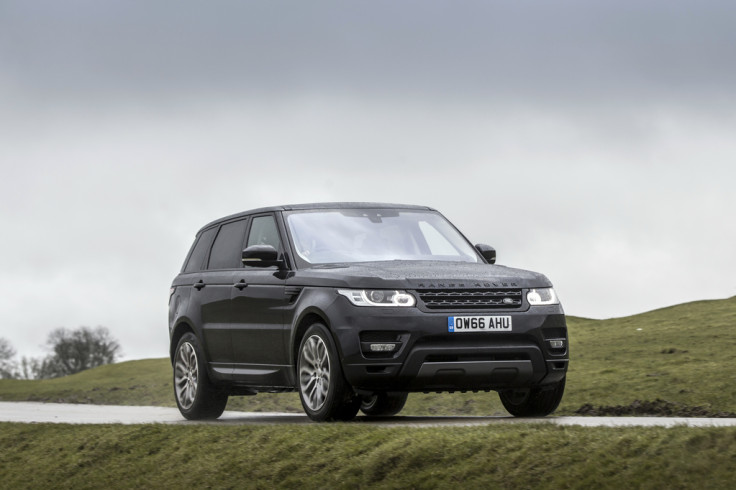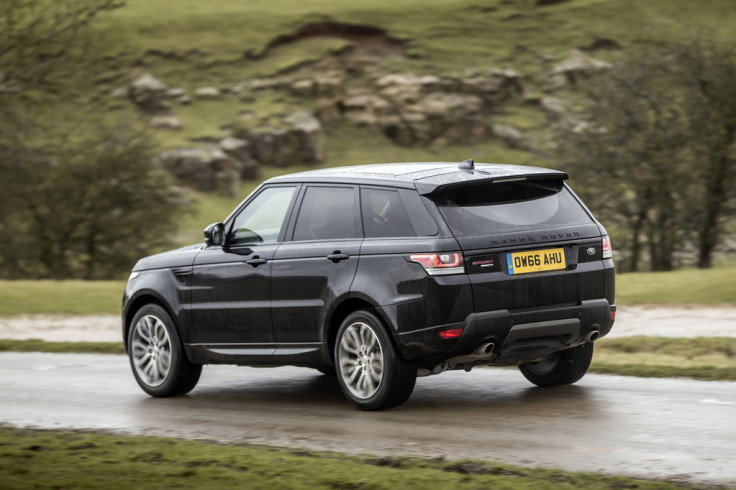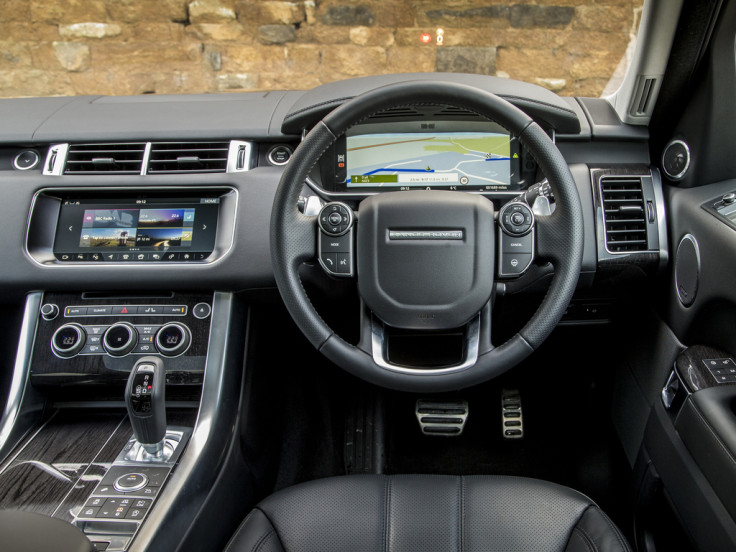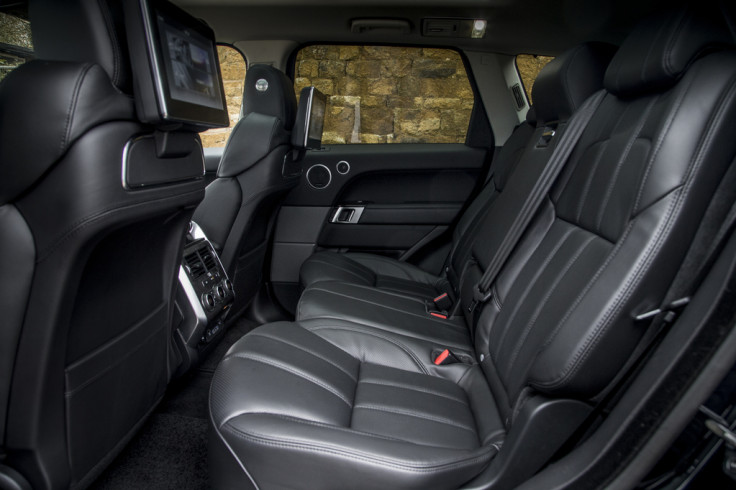Range Rover Sport review: With the trendy Velar upcoming, is this still the Goldilocks of the range?
We try out the Range Rover Sport to see if it still has what it takes before the stylish new Velar arrives.

Ahead of the sleek new Range Rover Velar landing in showrooms later this year, we decided it was a good time to take its older, larger and more sensible brother, the Sport, on a road trip. With the average Evoque costing around £35,000 ($45,000) and the average Sport closer to £75,000, the Velar has a huge space to fill. But weak-at-the-knees styling, and an options list capable of taking the Velar's price to north of £70,000, put the pressure of a sibling rivalry on the Sport, the likes of which it hasn't felt before.
Is the Sport still the Goldilocks choice for those who want a Range Rover not too big and not too small, or is the glamorous new Velar about to take the wind from its sales? Let us take you on a trip through England, France and Belgium to find out.
Our first exposure to the RR Sport is not what you'd call a normal one. We're currently sitting in the rear middle seat with a foot in each passenger footwell as a friend steers us out of an east London car park. We're five-up and heading to Bruges via France and the Channel Tunnel, and for now your correspondent has drawn the short straw (on account of being the shortest) and has to make do with the middle seat for a few more miles.
While here, let us quickly introduce the car. It is a 2017 Range Rover Sport. We have the top-of-the-line Autobiography Dynamic trim level with a 3.0-litre V6 diesel engine and, as in standard on all RRs, an automatic eight-speed gearbox.
This car started at £80,300 but with options like privacy glass, adaptive headlights, remote climate control, cameras, heated and cooled seats with massage function, TV screens and upgraded sound system, the total damage is a rather substantial £94,720. This is more than double the Velar's entry price, but falls only slightly beyond what you'll pay for a fully kitted-out First Edition model when they arrive in the summer.

While some of the toys are as you'd expect (the massage seats transition from novelty to necessity alarming quickly), others took us by surprise. Conversation Assist is bundled with the 22-speaker Meridian reference sound system (£4,140), and helps the driver and passengers hear each other by playing their voices through the speakers. What began as confusion over why our voices sounded weird ended in us all being able to speak quietly while still hearing every word clearly over the sounds of road, wind and music.
Another clever piece of interior tech is the dual view touchscreen on the dashboard. The infotainment system shows up as normal most of the time, but a few taps of the settings menu creates a situation whereby the driver can see one thing while the front passenger can see something else; essentially the screen is projecting a different image to each front seat. This way, the passengers can all watch a TV (thanks to two more screens in the back), while the driver's view disappears when the car starts moving.
After a quick driver change IBTimes UK takes the helm and steers the Sport towards the tunnel for an early evening train to Calais. For all its off-roading prowess, wafting along motorways is (disappointingly, perhaps) where Range Rovers feel most at home. You sit high in that "commanding driving position" which city-dwelling SUV buyers can't get enough of; there are well positioned armrests; the lumbar massage does its job and the optional Meridian sound system is excellent. Arm on rest, wheel pinched between thumb and forefinger, radar-guided cruise control taking care of the pedals, drinks chilled in a mini fridge between the two front seats... have road trips ever been easier?

We, in the driver's seat, reach Bruges in the same mood one might reach for a cold drink aboard a Mediterranean superyacht. But while there's no denying the Range's comfort, when three of the five occupants are at least 6ft tall, a couple of hours of French autoroute still takes its toll on our passengers.
The return trip two days later begins with a tight car park immediately reminding us of the car's vast size; SUVs in town and cities centres have become very much a part of modern life, but threading them into tight spaces requires all the cameras, sensors, judgement – and blind luck – you can muster.
"Look, a range to rove!" an excited passenger shouts, pointing at a nearby field we could probably muck about it. But having sampled Land Rover's Terrain Response in the new Discovery earlier this year, we're all too aware that the Range Rover Sport, a car with similar skills and an ability to wade in 85cm of water, would laugh at such a feeble attempt at off-roading. And besides, how many Range Rover owners ever get their cars muddy, let alone take Terrain Response out of manual, jack up the suspension to rock crawl mode and engage the low-range gearbox?
As we said with the Discovery in Utah, it is endlessly pleasing to know the car is capable of traversing just about anything, like how diving watches are good to 300 metres when they'll only ever be dropped in the sink. But more often than not it's a case of leather, heated massage seats and televisions over wade depth sensors and knobbly tyres.

The 3.0-litre V6 diesel of our review car – producing 306 horsepower and a substantial 700 Newton meters of torque from just 1,500rpm – makes light work of the motorway taking us back to Calais. A car like this is never going to sound particularly tuneful, but the exhaust emits a pleasing growl with each prod of the accelerator, followed after a brief hesitation by a satisfying, raised-nose surge forward.
We head back into London on a Friday afternoon and as the traffic builds the Sport's size again makes itself known. But where car parks can border on traumatic, busy city streets feel within the car's comfort zone. The engine's mountain of torque mixed with the whole demeanour of piloting a 90-grand Range Rover makes us want to push our way through traffic more than we would in something smaller. Perhaps not the most sincere of motoring personalities to adopt, but one which driving such a car makes seem acceptable.
Find a more interesting road, switch the car into Dynamic mode to stiffen everything up, take the gearbox out of automatic to make use of the paddle shifters behind the steering wheel, and the big old bus wakes up nicely. The V6 doesn't exactly rush to the rev limiter, but exploiting the low-down torque is infinitely satisfying and the car's handling is far less wayward than you might expect. Of course Land Rover offers the V8 Sport SVR for even more on-road performance, but for the occasional spirited run out to the next town's farm shop, the V6 is all you will ever need.
With the flashy Velar looming, the Sport is still shining bright in the upper-middle of the Range Rover hierarchy. It only slightly waters down the grandeur of the full-size Range Rover while keeping itself comfortably above the entry-level Evoque.
The Sport will no doubt face still competition from its Velar relative – and Jaguar Land Rover admits there will be some cannibalisation by the trendy upstart. But for those wanting the best combination of size, practicality, price and styling, the Sport continues to shine bright.
© Copyright IBTimes 2025. All rights reserved.






















